ENVIRONMENTAL OPTIMIZATION FOR PUBLIC CULTURAL CENTRE IN MADRID
SITE & ENVIRONMENTAL ANALYSIS
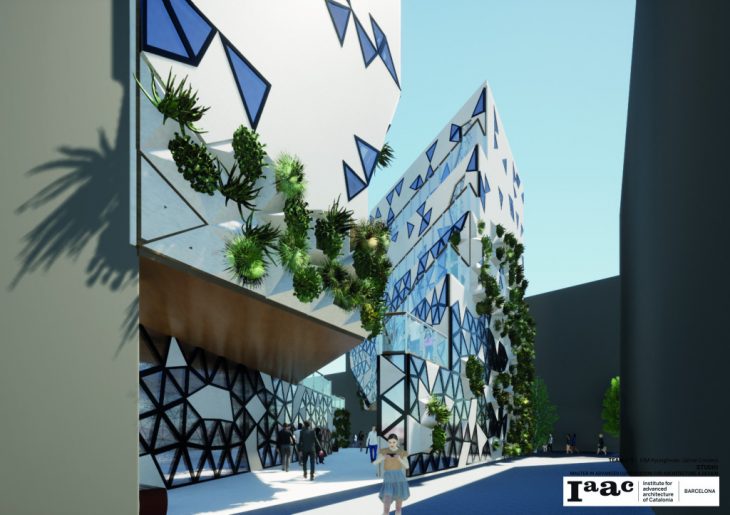
This project is related to our studio project.
As we already know, Madrid, as in every big city, has a problem with the heat islands and the effect that they produce on the increase of temperatures, which should be taken into account as the first problem for our analysis and our design. By doing a climatic analysis through Ladybug on Grasshopper, we found out that there is a relatively hot and dry summer, and a slightly cold but quite humid during winter.
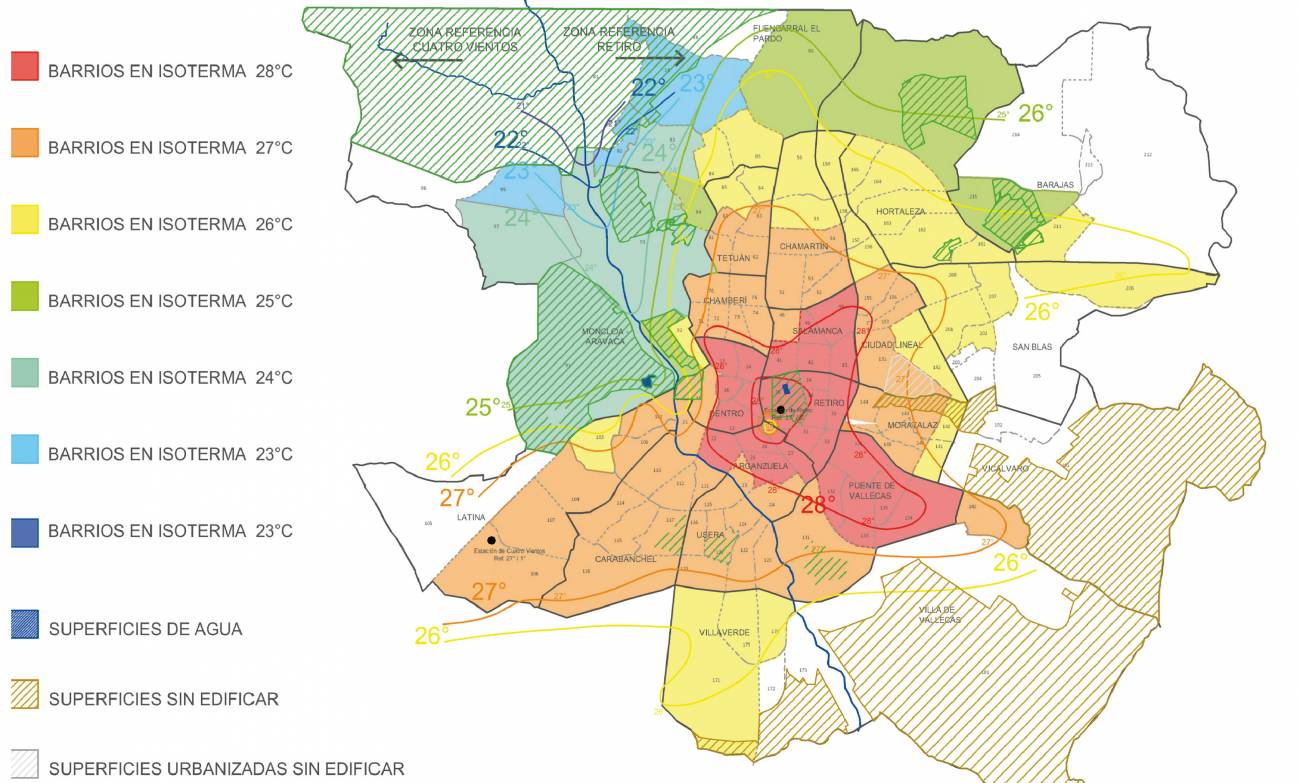
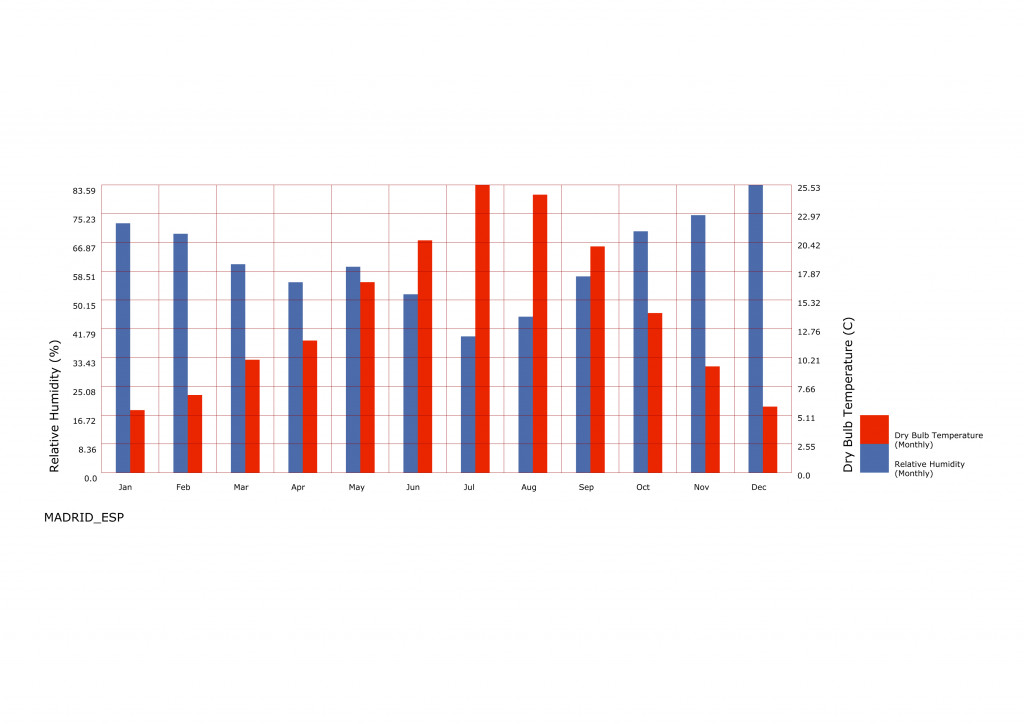
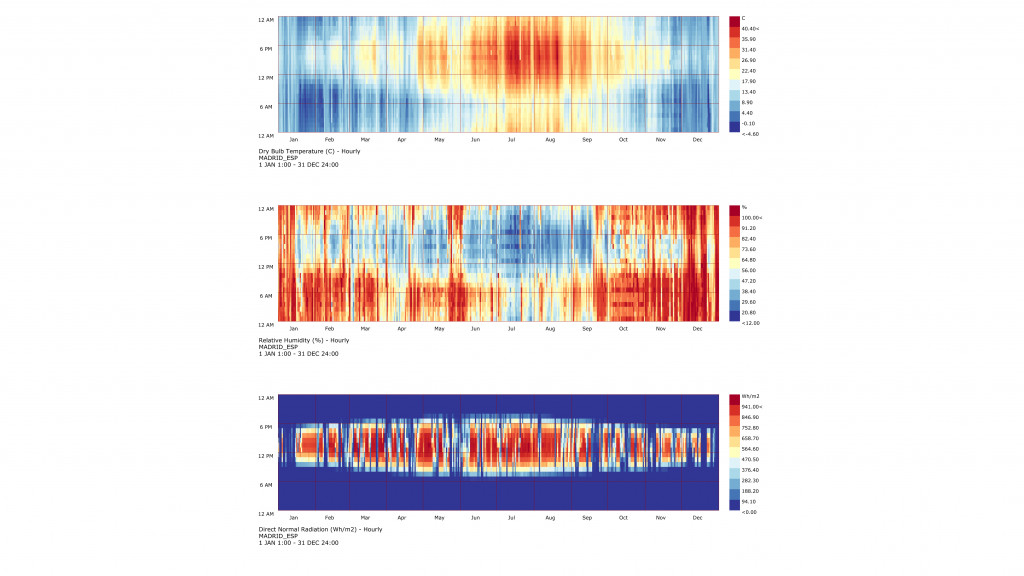
The outdoor comfort analysis was done via Psychrometric chart. It shows that during all seasons there are some comfort days during summer. It would be required to think about a cooling system during this season.
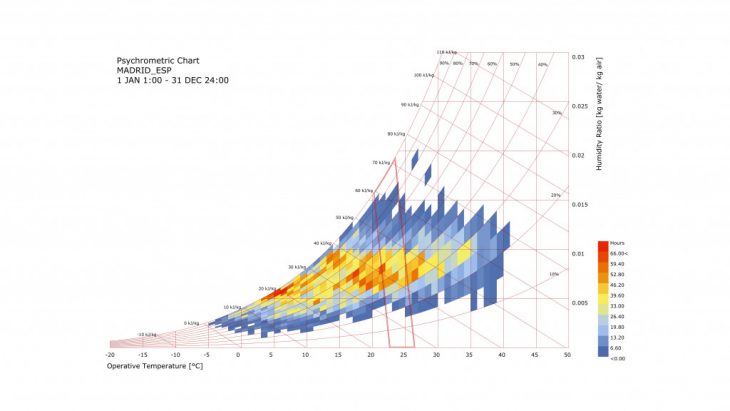
With the radiation analysis we saw that there is a quite proportional high radiation distribution on our site, with the left below corner which receives a bit less of radiation.
And that the radiation comes mostly from direct radiation as the site is facing south east.
Through the radiation analysis, we understood that our site receives high radiation, especially on the upper corner, and that radiation is an important factor to be considered in our design.
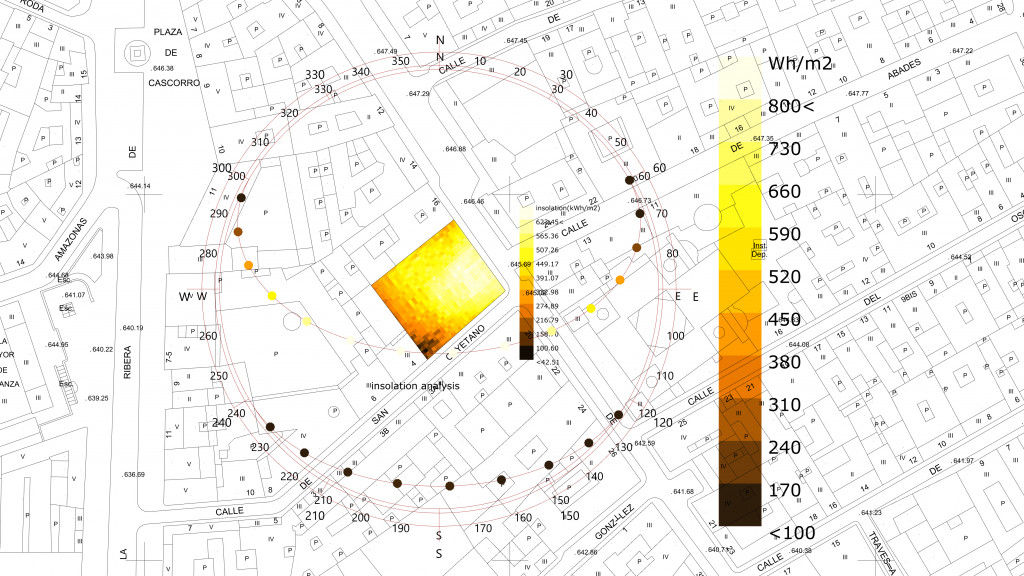
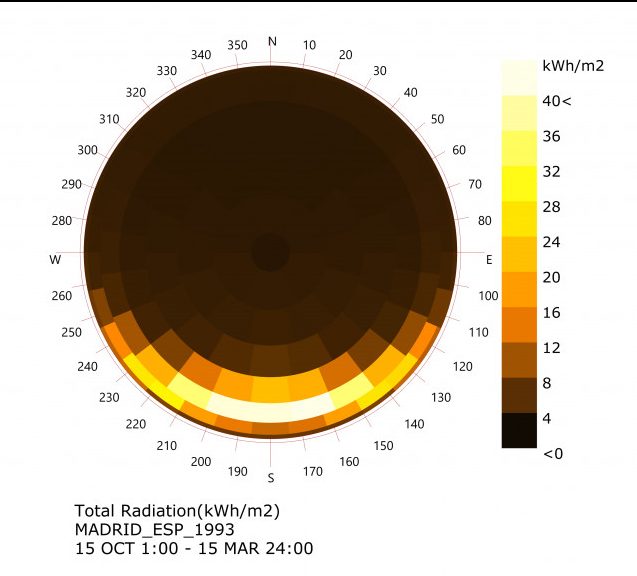
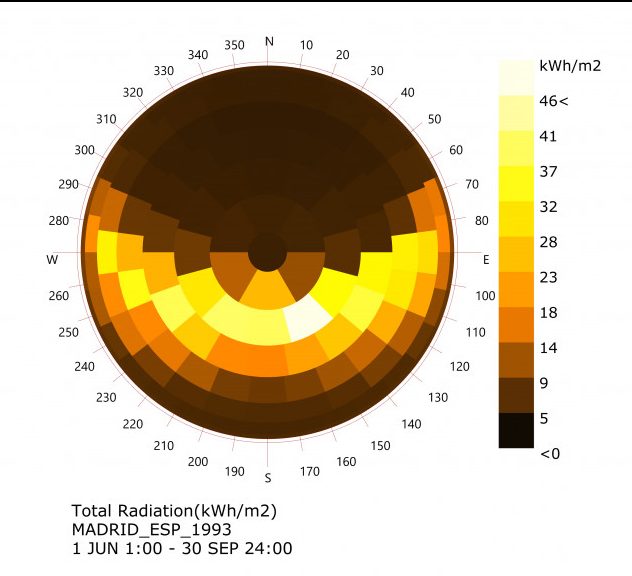
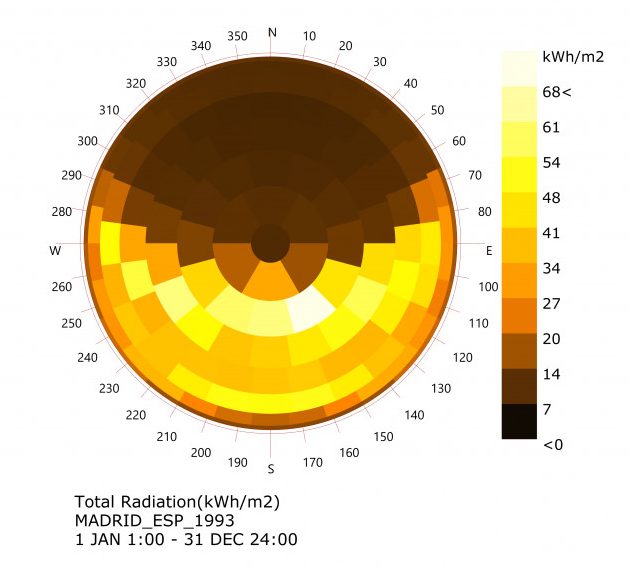
OBJECTIVES
In our project, we used a triangular mesh modeling for solar analysis. Since triangular form is more effective for fabrication than other geometrical forms and for a complex curved shape. Insolation study is crucial data that becomes an input to other datas to optimize for form finding and finding openings for windows. Here, Honeybee is employed to take a role principal from site analysis until decision making in the end. Our objective is to have an adaptive design regarding solar radiation and noise.
In this seminar, we focused on 2 questions below;
- How our solar analysis can define architectural building and façade design, and also interior comfort within other key factors of conception?
- How can we prove to a client which design is better?
DEVELOPMENT
Based on our context and site analysis, we did algorithmic form finding through Wallacei by parameterizing the data from the analysis. We ran different optimization strategies until we found the one which suits more. The principal strategy for form finding was to give a main circulation across our site which was extracted from the data of the Pedsim tool. Then a different language of rotation, scale of distance and offset for creating a space between the two buildings. was applied to optimize the form finding. The goal of the final optimization was to maximize floor area, and building volume, maximize the distance between the two buildings and minimize solar radiation.
This public cultural center is combined by 2 buildings. The one in the corner of the site has a Lobby, multi-purpose room and offices. Another building which is bordered on streets has galleries and classrooms for skill & culture sharing of inhabitants. The programs are related with the issue of privacy for users, for exemples, we gave more % of openings for public spaces which are ground and 1st floor. These opening and privacy issues are studied based on the solar radiation meshes. These triangles meshes were also an input for an acoustic ray-tracing. The triangular meshes used as panels of the facade. For example, where it has a high radiation, and mid-high privacy, we gave closed panels. The extruded volumic panel is given for the area which has a high acoustic reflection from the street. Windows were made for the zone which aren’t affected by acoustic reflection, low privacy program and solar radiation.
In consequence, the facade will be composed of these 3 different types of triangles, window, plant and closing panel depending on the outdoor acoustic and radiation data and privacy of the programs.
This method allowed us to test many variations of facade along the value of privacy and radiation percentage values. In conclusion, we could get a 2 proposition for a future client. The client can compare the number of panels and windows through our comparaison images and graphs.
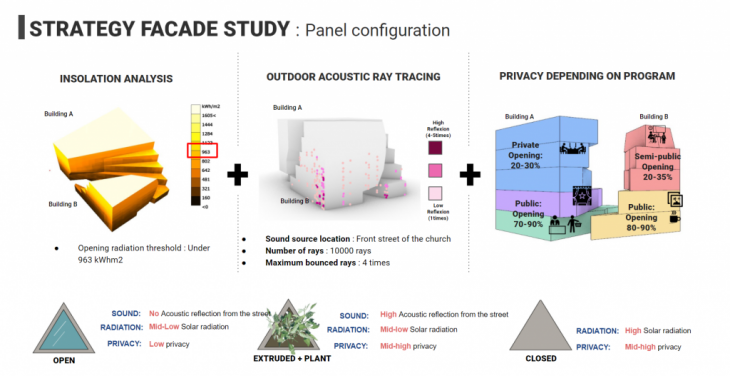
In order to explain our methodology to integrate our all output datas for facade design, we explain with the case of the building A. With the triangle mesh model that is also used for the solar radiation analysis, is tested to find out the radiation threshold for opening. Then we got a threshold of 60% of the facade where it received mid & high radiation and 40% for mid & low radiation areas. The 2nd variation for opening & closing panels is related to the program and its privacy. As you can see 2 blue and grey images, as the % value is increased, more windows are created. For example, For Close panels, The higher % we have, the less numbers of closed panels(which means more openings) for the ground and the first floor where the public space. As you can see, we have more closed panels at the upper floors where there are private spaces for offices at the beginning of the simulation. Then it is going to be reduced for openings by given values.
As well as our previous method, we used a solar radiation mesh model to define an area that would have an extruded volumetric panel with plants for reflecting noise acoustic particles. Green points represent the area affected by noise from the street. Therefore, as the range value is increased, the more panels will be created around the green point. In the result, we decide to give 10% of the panel around the point will have volumic panel with plants.
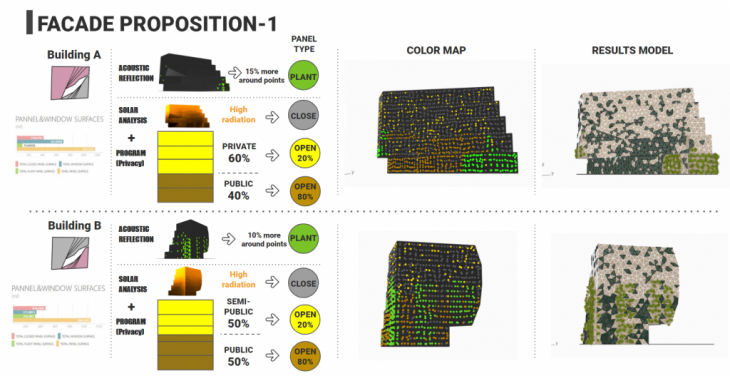
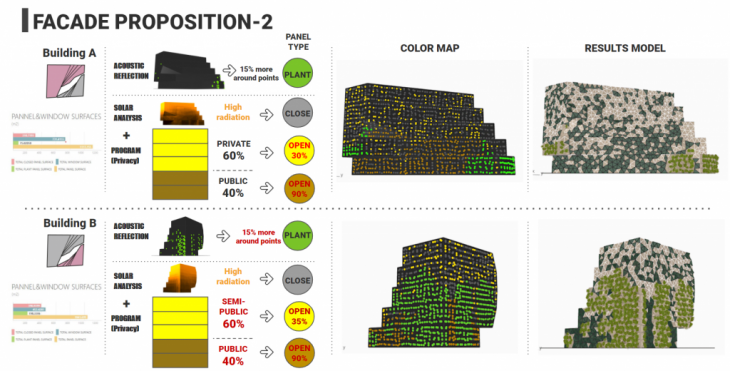
The next question for us was how can we decide which design is better for a future client? We use daylight availability study as the decision maker by predicting the interior thermal comfort for users. The study model was the 3rd floor and the ground floor to compare two propositions. The red colour represents the zone of over 50% occupied hours by daylight autonomy. At the test of Annual Sunlight exposure, the proposition 1 has less purple area zone than the second proposition. It means that there is less potential area for glare or overheating by daylight.
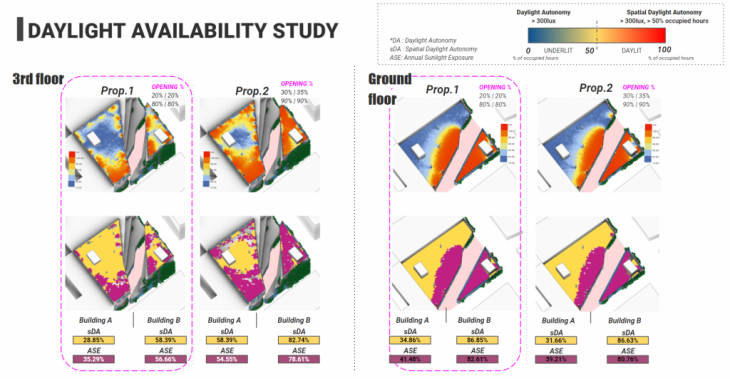
The next decision maker between our 2 propositions was the energy consumption analysis. This analysis allows us to show to clients about the relationship with facade design and energy utilization. Left graph (proposition 1) represents that it has low cooling load in total. In other words, the facade design of proposition1 has less energy consumption than the 2nd proposition. In consequence, we could choose the design of proposition 1 as a better and more effective design for clients.
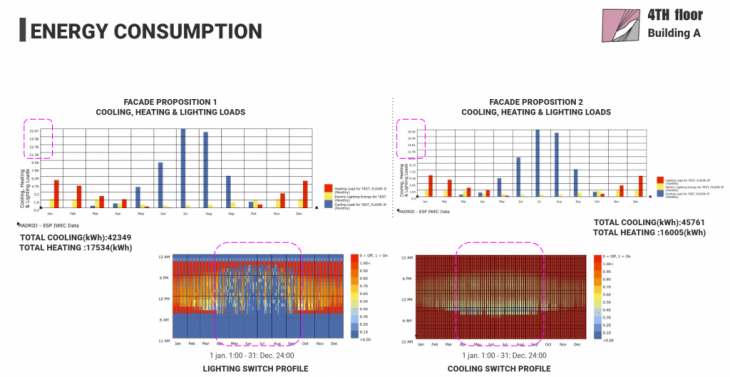
In conclusion, these data relating facade design allow client and architect to visualize directly their ideal design and its result of comfort and energy consumption. Thus, both can reach to the final design based on data. It would be a more time-saving strategy if we could use the energy consumption and daylight avalirity study as an input with other parameters such as sounds, radiation and privacy.
Related projects:
Public cultural centre in Madrid.
Structural optimization for public cultural centre.
Environmental Optimization for Public Cultural Centre is a project of IAAC, Institute for Advanced Architecture of Catalonia developed in the Master in Advanced Computation for Architecture & Design in 2020/21 by
Students: KIM Kyunghwan and Jaime Cordero Cerrillo
Lead Faculty: Angelos Chronis
Faculty Assistant: Aris Vartholomaios and Sarah Mokhtar